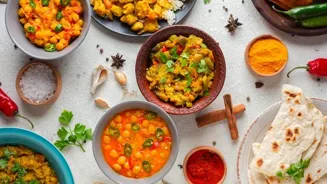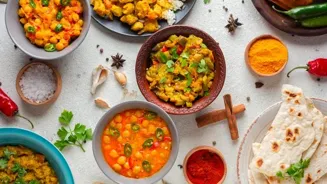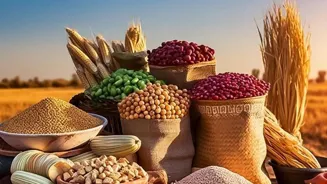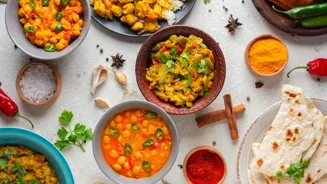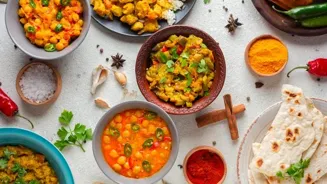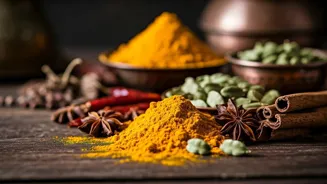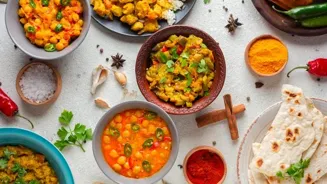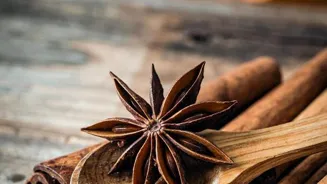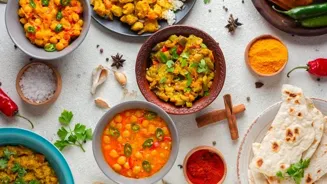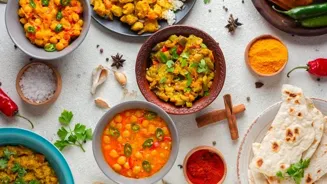Discover the richness beyond "curry" in Indian cuisine. A journey through diverse flavors and spices awaits. Delve deeper!
For many folks abroad, Indian food often gets summed up in a single word: "curry."
But believe me, that's like saying Bollywood is just one song and dance sequence!
Indian cuisine is a vast and vibrant landscape, filled with regional variations, unique ingredients, and age-old traditions that go far beyond your average takeaway curry. It's time we gave Indian food the deep dive it truly deserves, exploring the incredible depth and diversity it has to offer.
We Indians know, but it's time the world understood too! This isn't just food; it's a heritage served on a plate.
India's diverse cuisine reflects regional flavors and traditions
Let's start with the basics. India is a huge country, and each region boasts its own distinct culinary style. North Indian food is often what comes to mind when people think of "Indian curry" – think creamy gravies, tandoori dishes, and breads like naan and roti.
But head east, and you’ll find Bengali cuisine dominated by fresh fish and subtle flavors, often using mustard oil and panch phoron (a blend of five spices). Move south, and you’ll be greeted by the spicy, tangy dishes of Andhra Pradesh, or the coconut-infused delicacies of Kerala.
Each state, each community, has its own culinary identity, shaped by geography, climate, and history.
Indian cuisine is diverse; not all food is curry
Imagine comparing pasta to paella – both are delicious, grain-based dishes, but they represent entirely different culinary traditions. Similarly, judging all Indian food as "curry" overlooks the nuances that make each regional cuisine so special.
We are using this article to shed some light on this misunderstanding that people have. We hope to remove the stereotype that people have about amazing Indian food. From the mountains in the north to the southern coast, the food options are amazing.
Spices in Indian cooking: precise blends create culinary masterpieces, like an artist painting
Now, let’s talk about spices. Yes, spices are a crucial part of Indian cooking, but they are used with incredible precision and artistry. It's not just about throwing in a bunch of chili powder and hoping for the best!
Each spice has its own flavor profile and purpose, and they are often combined in complex blends to create unique and harmonious tastes. Think of it like painting – each spice is a color, and the chef is the artist, carefully blending them to create a masterpiece.
The knowledge of spices is something that is taught and passed on through generations in Indian families.
Spices in Indian cuisine: cultural, medicinal, diverse
Take garam masala, for example. It's a staple in many North Indian dishes, but the exact composition can vary from family to family, each with its own secret recipe. Or consider the use of turmeric, not just for its vibrant color, but also for its medicinal properties.
Spices are not just flavor enhancers; they are an integral part of Indian culture and wellbeing. They help with immunity and are good for our health. Many of these spices can only be found in India.
Exploring iconic Indian vegetarian dishes beyond the ordinary
Let's explore some iconic dishes that showcase the depth of Indian vegetarian cuisine. Forget the generic "vegetable curry" – we're talking about dishes with real character and complexity!
Aloo Gobi, for instance, is a classic combination of potatoes (aloo) and cauliflower (gobi) cooked with ginger, garlic, and a blend of spices. The key is to get the balance of flavors just right, so the potatoes are tender and the cauliflower is slightly crisp.
Then there's Dal Makhani, a rich and creamy lentil dish simmered overnight for a velvety texture. Each region creates vegetarian dishes, each distinctively tasting yummy.
Dosa and Dhokla: South and Gujarati flavors, diverse and delicious
For a taste of South India, try Dosa, a thin, crispy pancake made from fermented rice and lentil batter. Served with sambar (a lentil-based vegetable stew) and coconut chutney, it's a breakfast staple that's both delicious and nutritious.
Or venture into the world of Gujarati cuisine with Dhokla, a steamed cake made from fermented chickpea flour. Light, fluffy, and slightly tangy, it's a perfect snack or appetizer. Now you can see these are all diverse food items, that do not qualify for only one type of food.
They all can be enjoyed!
AI Generated Content. Glance/InMobi shall have no liability for the content